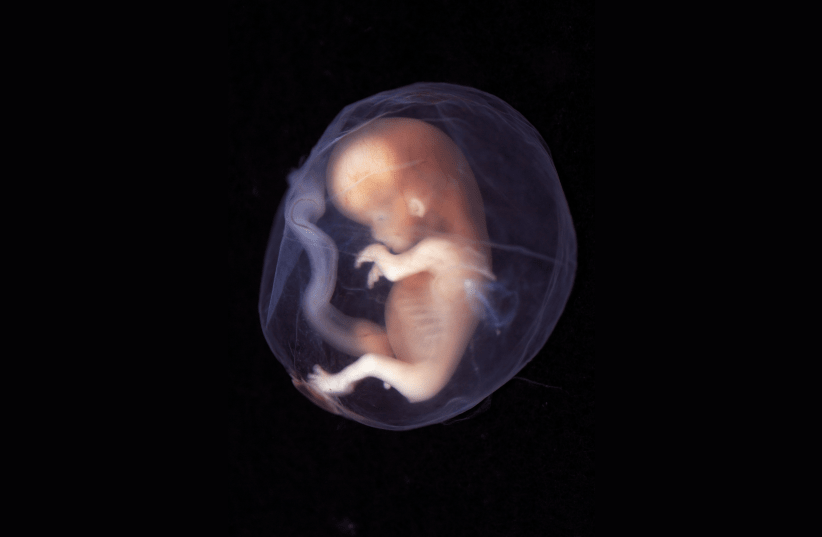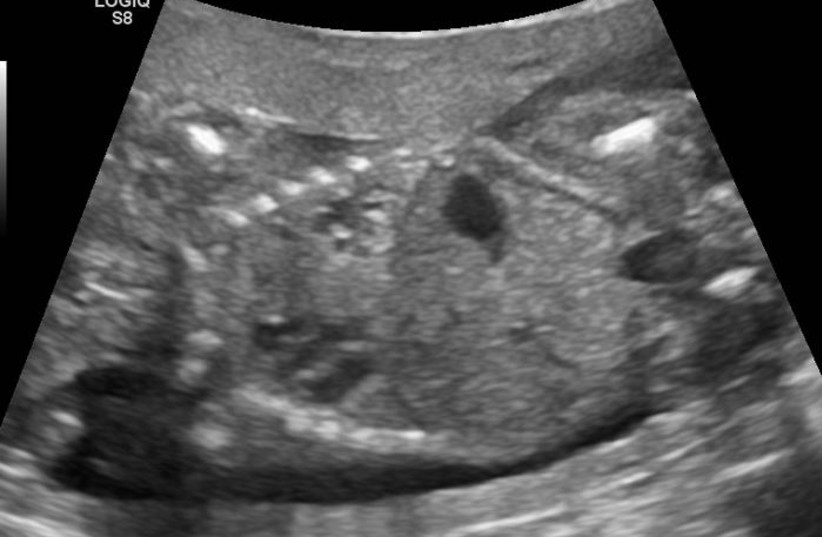Babies in the womb exposed to two languages hear speech differently when born, study finds
“Our data show that prenatal language exposure modulates the neural encoding of speech sounds as measured at birth," researchers said.
Be careful what you say in front of your fetus. It’s been proven by researchers that babies in the womb hear and learn about speech, at least in the third trimester. For example, newborns have been shown to already prefer the voice of their mother, recognize a story that had been repeatedly told to them while in the womb, and tell apart their mother’s native language from what others they speak.
What wasn’t known until now was how developing fetuses learn about speech when their mother speaks to them in a mix of languages – but this is common. There are about 3.3 billion bilingual people worldwide, and in many countries, bilingualism or multilingualism is the norm.
“Here we show that exposure to monolingual or a bilingual speech has different effects at birth on ‘neural encoding’ of voice pitch and vowel sounds: That is, how information about these aspects of speech has been initially learned by the fetus,” said Dr. Natàlia Gorina-Careta, a researcher at the Institute of Neurosciences of the University of Barcelona and the joint first author of a new study in Frontiers in Human Neuroscience under the title “Exposure to bilingual or monolingual maternal speech during pregnancy affects the neurophysiological encoding of speech sounds in neonates differently.”
Newborns with bilingual mothers more sensitive to range of speech frequencies
The team interpreted their results with the belief that bilingual speech by the mother, as compared to monolingual, is characterized by greater complexity in the speech sound signal, rendering newborns from bilingual mothers more sensitive to a wider range of speech frequencies without generating a particularly strong response at any of them. Our results contribute to an expanding body of research indicating the influence of prenatal experiences on language acquisition and underscore the necessity of including prenatal language exposure in developmental studies on language acquisition, a variable often overlooked yet capable of influencing research outcomes.”
Speaking two languages daily also has benefits for the way in which higher cognitive processes operate and results in more precocious development of inhibition and attentional abilities, they asserted.
Gorina-Careta and colleagues did their study in Catalonia, where 12% of the population habitually use both Catalan and Spanish. They recruited the mothers of 131 newborns that had been born one-to-three day before – including two pairs of twins – in Sant Joan de Déu Barcelona Children’s Hospital.
Of these mothers given questionnaires, 41% replied that they spoke exclusively Catalan (9%) or Spanish (91%) during their pregnancy, including when talking to their growing bump. The other 59% had spoken in two languages (at least 20% of the time for the second language): either Spanish and Catalan or a combination of one of these with languages such as Arabic, English, Romanian, or Portuguese.
“Languages vary in the timing aspects of speech, such as rhythm and accentuation, but also pitch and phonetic information. This means that fetuses from bilingual mothers are expected to be immersed in a more complex acoustic environment than those from monolingual mothers,” said Prof. Carles Escera, one of the two corresponding authors.
The researchers placed electrodes on the babies’ foreheads to measure a particular type of electrophysiological brain response – the ‘frequency-following response’ (FFR) – to repeated playback of a carefully selected sound stimulus, 250 milliseconds long and composed of four stages: the vowel /o/, a transition, the vowel /a/ at a steady pitch, and /a/ rising in pitch.
“The contrasting vowels /o/ and /a/ belong to the phonetic repertoire of both Spanish and Catalan, which is partly why we chose them,” explained joint first author Dr. Sonia Arenillas-.
“Low-frequency sounds like these vowels are also transmitted through the womb reasonably well, unlike mid- and high-frequency sounds that reach the fetus in a degraded and attenuated manner.”
The FFR measures how precisely the action spikes produced by neurons in the auditory cortex and the brainstem mimic the sound wave features of the stimulus. A more distinctive FFR is evidence that the brain has been more effectively trained to pick up precisely that sound. For example, the FFR can be used as a measure of the degree of auditory learning, language experience, and musical training.
The authors showed that the FFR to playback of the /o a/ sound was more distinctive, that is, better defined and with a higher signal-to-noise ratio, in newborns from monolingual mothers than in newborns from bilingual mothers.
These results suggest that the brains of fetuses of monolingual mothers had learned to become maximally sensitive to the pitch of just language. In contrast, the brains of fetuses of bilingual mothers seem to have become sensitive to a wider range of pitch frequencies but without generating the maximal response to any of them. A trade-off may thus exist between efficiency versus selectivity in learning about pitch.
“Our data show that prenatal language exposure modulates the neural encoding of speech sounds as measured at birth. These results emphasize the importance of prenatal language exposure for the encoding of speech sounds at birth and provide novel insights into its effects,” said Escera.
Joint corresponding author Prof. Jordi Costa Faidella cautioned: “Based on our results, we cannot make any recommendation to multilingual parents. The sensitive period for language acquisition lasts long after birth, and thus, postnatal experience may well overshadow the initial changes undertaken in the womb. Future investigation into how a bilingual language environment modulates sound encoding during the first years of life will shed more light into this issue.”
THIS PAGE WAS POSTED BY SPUTNIK ONE OF THE SPUTNIKS ORBIT BLOG HTTPS://DISQUS.COM/HOME/FORUM/THESPUTNIKSORBIT-BLOGSPOT-COM/




No comments:
Post a Comment